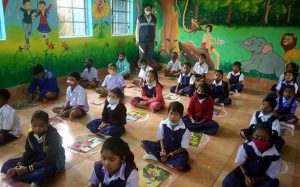Project Samhati: Odisha

The new National Education Policy 2020 lays emphasis on imparting teaching in the mother tongue in primary classes. However, when seen from the context of the diverse language-base of tribal people, the task appears to be quite onerous.
- In this scenario, Odisha’s decade-long experiment in multilingual education may come in handy to take up the challenge.
- The most important aspect of Mother-Tongue Based Multi-Linguial Education (MTBMLE) is that it helps save endangered tribal languages.
- The ST and SC Development Department of the Odisha government has started a project called ‘Samhati.
- It intends to address the language issues faced by tribal students in early grades or elementary classes.
- Under this, the department plans to cover approximately 2.5 lakh students in 1,450 primary schools in the State.
- Implementing Agency: The Scheduled Castes and Scheduled Tribes Research and Training Institute (SCSTRTI) along with the Academy of Tribal Language and Culture (ATLC), Bhubaneswar are implementing the project.
- Multilingual Learning: Under Samhati, it has been decided that all teachers of primary level would be provided functional knowledge of tribal languages and ways of communicating with tribal students.
- Odisha’s adivasi communities are as diverse as 21 spoken languages. Out of the 21 languages, Santhali, the only language which has been included in the eighth schedule of Constitution.
- It is taught in its own ol chiki script while the rest of tribal languages have Odia scripts.
- Only six tribal languages — Santali, Ho, Soura, Munda and Kui — have a written script.
- These students are a multilingual group unlike mono-lingual groups in regular schools.




